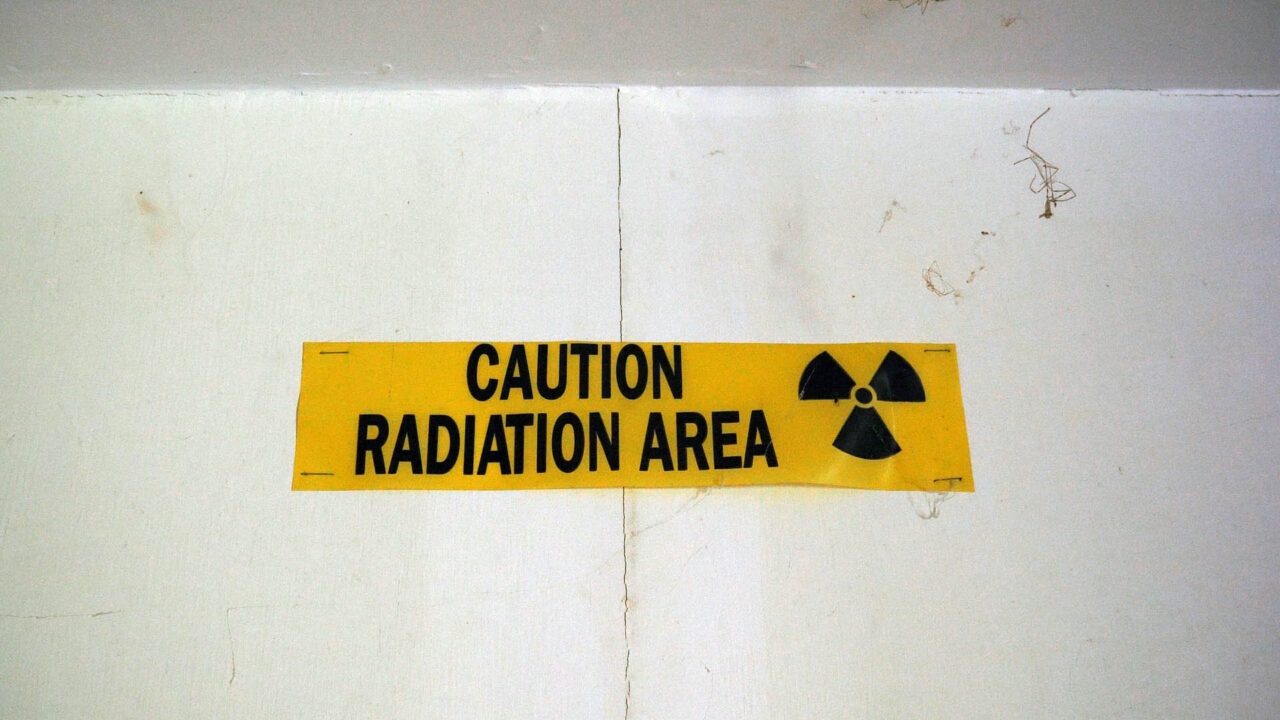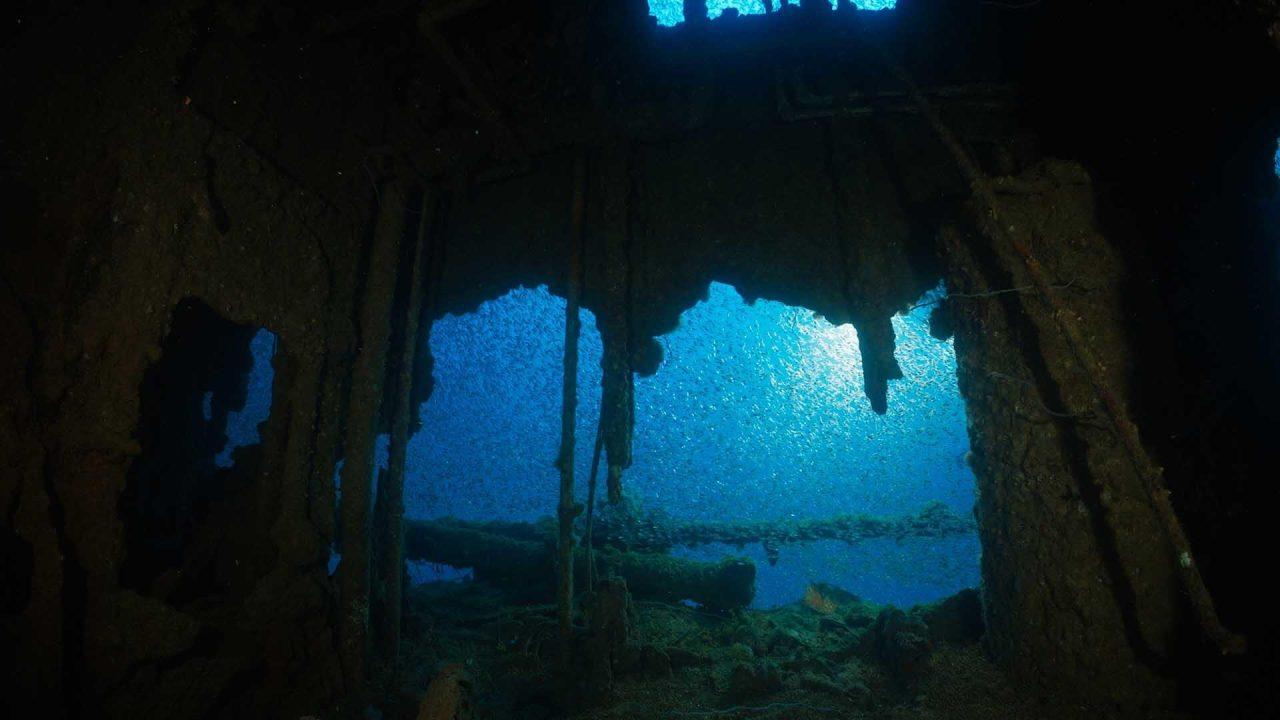A Dizzying Thought – On the Way Down to Ground Zero
I swim past the contours of two large gun barrels but they are almost completely covered in glassfish. I have never seen such a large school before. We swim on and slowly sink along the hull of the USS Saratoga. It’s 52 metres to the bottom.

The Saratoga is a US aircraft carrier that is over 270 metres long. It is one of the largest shipwrecks at the bottom of the ocean and there are still aeroplanes outside the wreck. The sun lights up the clear blue water as I slowly continue deeper down. We are on the shadow side of the wreck. I feel that something is coming towards me fast. I have time to press record on the camera. A large reef shark comes swimming straight towards the lens and the camera rolls.
Full of life – against all odds.
We dive on the remains of the first two US nuclear explosions, Abel and Baker. The first detonation was carried out in the air above the ships. The second was placed 20 metres below the surface. The effect was completely different and most of the target ships sank. Including the USS Saratoga, which was considered ‘unsinkable’ at the time.

It’s a surreal feeling down here. I dive in what is usually called Ground Zero. Right in the centre of the area where the second bomb (Baker) exploded. Of course, it was not only the ships that were damaged. In order to get all the ships into the lagoon, a channel had to be blown through the coral reef. The nuclear explosion below the water’s surface then created a massive crater, which was partially filled with radioactive powder from crushed coral. Virtually all coral reefs and all living things under the surface of the lagoon – disappeared. Here at Bikini Atoll, life had to start all over again.
Life will come back – as long as we leave it alone
In 2008, scientists estimated that about 65% of the area’s biodiversity had returned, but 28 species of coral are still missing and appear to be extinct. The radioactive contamination of the area has prevented humans from fishing here since 1946. And for this reason, there is a greater richness of marine life here than in many other marine areas of the globe. For example, it is claimed that this may be the richest shark area in the world.

Back in 2005, Deep Sea was here with a dive team. Today, when we look at Carl Douglas and Jonas Dahm’s 19-year-old photographs, we see that the wrecks are similar but the underwater life is clearly richer now.
I have dived in places with more marine life but above all in places with much less. It is of course difficult to get a true picture when we don’t know exactly what it looked like before the bombs went off in 1946. But the feeling is that there has been an enormous regeneration. Corals, fish and large predatory fish. Everything looks ‘normal’. It feels strange and perhaps a little wrong, but the ghostly wrecks, remnants of the post-war dark period, become artificial reefs where new life thrives. Colours, shapes and life emerge on top of the wrecks as we start to look closer. Behind giant propeller blades, in gun barrels and among old bombs, we see bubble coral, small fish and the classic Nemo fish, the clownfish. Life goes on as usual and the traces of man’s folly are slowly being erased. But could 23 nuclear bombs, over time, have less of a negative impact on the marine ecosystem than a constant human presence?


The thought is staggering. Can it really be like that? We see no people, no boats, not even fishing boats. Shark finning has been banned in the entire area around the Marshall Islands since 2007. It seems to have had an effect. If you compare our photos today with those taken 19 years ago, the difference is huge. Life is coming back. 80 years is an extremely short time horizon and it feels promising, although strange.
My thoughts are spinning, I can’t get over the feeling. I need to return here.



